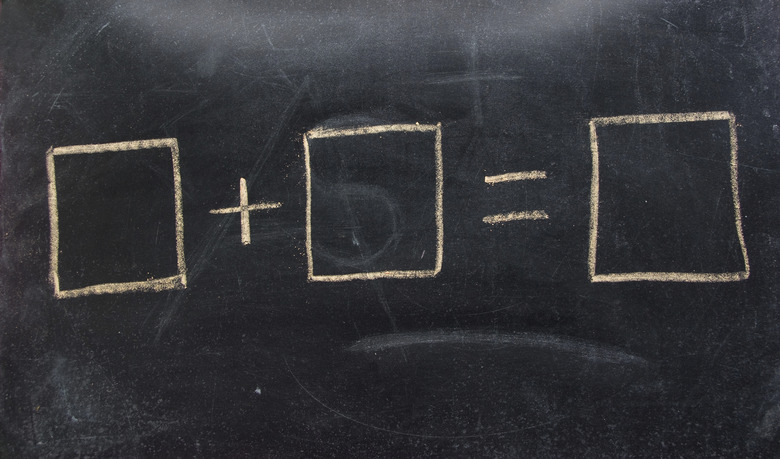The History Of Equality Symbols In Math
Imagine trying to write out a math equation in words. For lower level computation problems this would be difficult enough, but for longer algebra and calculus problems, writing out an equation in words could take multiple pages. Using mathematical symbols consumes less time and space. Furthermore, math symbols are international, allowing individuals to share information through symbolism that they could not share in words.
Equal Sign
Equal Sign
Before the equal sign came into popular use, equality was expressed in words. According to Lankham, Nachtergaele, and Schilling at University of California-Davis, the first use of the equal sign (=) came in 1557. Robert Recorde, circa 1510 to 1558, was the first to use the symbol in his work, "The Whetstone of Witte." Recorde, a Welsh physician and mathematician, used two parallel lines to represent equality because he believed they were the most equal things in existence.
Inequalities
Inequalities
The signs for greater than (>) and less than (<) were introduced in 1631 in "Artis Analyticae Praxis ad Aequationes Algebraicas Resolvendas." The book was the work of British mathematician, Thomas Harriot, and was published 10 years after his death in 1621. The symbols actually were invented by the book's editor. Harriot initially used triangular symbols which the editor altered to resemble the modern less/greater than symbols. Interestingly, Harriot also used parallel lines to denote equality. However, Harriot's equal sign was vertical (II) rather than horizontal (=).
Less/Greater Than or Equal To
Less/Greater Than or Equal To
The symbols for less/greater than or equal to (< and >) with one line of an equal sign below them, were first used in 1734 by French mathematician, Pierre Bouguer. John Wallis, a British logician and mathematician, used similar symbols in 1670. Wallis used the greater than/less than symbols with a single horizontal line above them.
Equal by Definition
Equal by Definition
There are several symbols used in algebra to denote "equal by definition." The modern symbols are (:=), (?), and (≡). Equal by definition first appeared in "Logica Matematica" by Cesare Burali-Forti, an Italian mathematician who lived from 1861–1931. Burali-Forti actually used the symbol (=Def).
Not Equal To
Not Equal To
The modern sign for "not equal to" is an equal sign with a slash through it. This symbol is attributed to Leonhard Euler, a Swiss mathematician who lived from 1707 to 1783.
References
- Math Worksheet Center: Why Do We Use Symbols in Math?
- University of California, Davis: Some Common Mathematical Symbols and Abbreviations by Isaiah Lankham, Bruno Nachtergaele, Anne Schilling
- University of St Andrews, Scotland: Biography of Robert Recorde
- University of St Andrews, Scotland: Biography of Thomas Harriot
- University of St Andrews, Scotland: Biography of Pierre Bouguer
- Earliest Uses of Symbols of Relation
Cite This Article
MLA
Seehorn, Ashley. "The History Of Equality Symbols In Math" sciencing.com, https://www.sciencing.com/history-equality-symbols-math-8143072/. 24 April 2017.
APA
Seehorn, Ashley. (2017, April 24). The History Of Equality Symbols In Math. sciencing.com. Retrieved from https://www.sciencing.com/history-equality-symbols-math-8143072/
Chicago
Seehorn, Ashley. The History Of Equality Symbols In Math last modified August 30, 2022. https://www.sciencing.com/history-equality-symbols-math-8143072/
